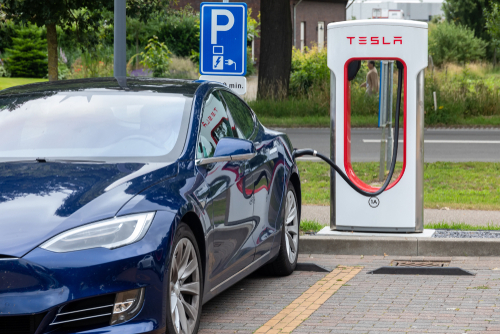Illinois to raise fees for electric vehicle owners, but less than expected

Electric vehicle (EV) owners in Illinois recently received a financial reprieve of sorts when state lawmakers shifted gears, opting to charge them $248 for registration annually rather than the $1,000 they’d previously proposed to help make up for the loss of state gas tax revenue, the Chicago Tribune reported.
However, the figure still represents a significant spike from the $17.50 yearly EV owners now pay, the Tribune continued.
By comparison, the newspaper stated, the registration fee for vehicles using combustion engines will increase to $148, opposed to the current registration, $101.
According to the Citizens Utility Board (CUB) website, the legislation is aimed at funding infrastructure, such as improvements to roads, bridges and transit systems.
However, David Kolata, executive director of CUB, said EV owners like him would have preferred the fee to be lower, but he welcomed the U-turn by legislators in the final legislation. “The proposal of $1,000 was designed to be punitive,” he said. “This is a more reasonable outcome.”
“Intentionally or not, I hate to say it, (but) the proposal of $1,000 was designed to be punitive.” That’s a problem, given that transportation needs to electrify for various reasons, including from an environmental point of view, continued Kolata.
“We see the electrification of the transportation sector to be one of the leading trends impacting our business,” according to a statement from ComEd. “If we’re electrifying in the name of climate change, it stands to reason that we’re not going to get there if we have dirtier fuels producing the electricity that’s running the EVs. We see a major effort ahead to integrate more renewables into our system to increase the output of clean energy. Obviously, this transformation will create new requirements for our grid to add EV charging infrastructure, and we’re developing partnerships to accelerate progress in this area.”
Meantime, Kolata pointed out the degree of the fee hike would hit EV owners hard in the pocketbook. “A fair fee might be around $75 or $80. Not that that’s endorsed by CUB inherently, but you can make that argument. When you start looking at proposals that are $250-$350-$500, $1,000, I think it’s unfair and not equitable.”
While acknowledging the importance of finding “a fair way to make sure the roads are being maintained,” Kolata counseled against overlooking the financial and environmental benefits of EV proliferation. “EVs can be a real value to the grid because they have batteries in them and when they’re (recharged), it (doesn’t impact the environment.),” he said. “If sound policies are in place and EVs are used as a distributive energy resource, it can lower overall bills for all consumers, including non-EV drivers.”
That’s not to mention his belief that the state’s failing to recognize the impact EVs can have on the environment and everyone’s wallet. “They can be a real value to the grid because they have batteries in them and when they’re (recharged), it (doesn’t impact the environment.) If sound policies are in place and EVs are used as a distributive energy resource, it can lower overall bills for all consumers, including non EV drivers.”
The issue’s particularly significant since, if current projections are on the mark, more EVs will on the road, he noted.
The transition to EVs is well underway with more than 1 million EVs currently on U.S. roads as of October 2018, according to the Edison Electric Institute. A report released last year by EEI and the Institute for Electric Innovation (IEI), Electric Vehicle Sales Forecast and the Charging Infrastructure Required Through 2030, projects that the next 1 million EVs will be on U.S. roads in less than three years – by early 2021.
The number of EVs on U.S. roads is projected to reach 18.7 million in 2030, up from 1 million at the end of 2018, the report also shows. This is about 7 percent of the 259 million vehicles (cars and light trucks) expected to be on U.S. roads in 2030.
About 9.6 million charge ports will be required to support 18.7 million EVs in 2030 – a significant investment in EV charging infrastructure.
